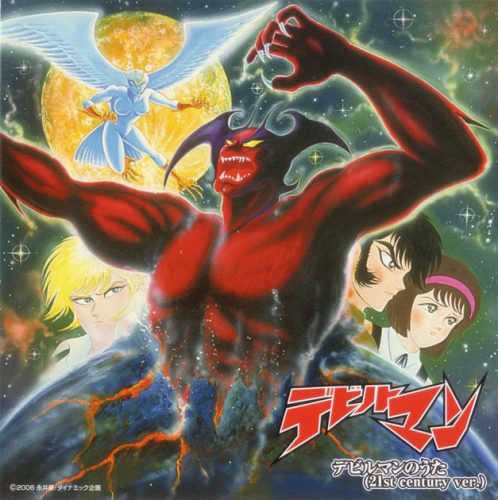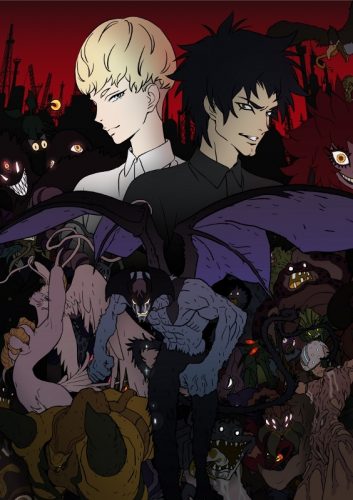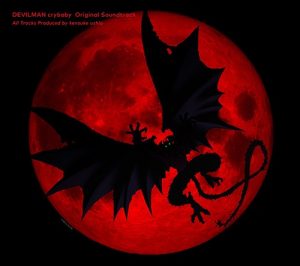
Spoiler alert for both the 1972 Devilman manga and Devilman Crybaby!
The original Devilman manga by Go Nagai had a lot to say about the state of Japan as well as the larger world in the 1970s. Its unflinching portrayal of the darkest parts of human nature helped solidify its status as a classic manga that still holds up (for the most part) to this day. The 2018 anime adaptation Devilman: Crybaby updates the setting to the present time and modernizes the social commentary along with it.
What’s so surprising about Crybaby is that it manages to be even more relevant and important to its contemporary audience than the original manga was over four decades ago. Let’s take a closer look at how the changes to Nagai’s legendary story struck a chord with the people of today.
Important Themes From the Original Devilman
The Devilman manga from 1972 carried a powerful anti-war message. The world was still deep in the depths of the Cold War, where battles were waged with arms races and spy tactics instead of soldiers. But any minute, it seemed like a bomb could go off and the careful act of civilization could crumble in an instant.
The demons of Devilman, who represent the basest of human desires and fears, reflect this terrifying tension in how they took over the Earth. Demon attacks initially only happened at underground Sabbath parties and secluded areas, but once demons were revealed to society (ominously appearing in the sky like an invading fleet), all hell broke loose. Humans essentially destroyed themselves by regressing to an animal-like state out of paranoia. In the end, Satan only needed to show his army to the world and the world collapsed underneath its own fear.
Crybaby’s Take on Internet Culture
Devilman: Crybaby, on the other hand, decided to focus less on the horrors of war and much more on how today’s internet-centric culture drives us apart as much as it brings us together. The shallow and misrepresentative nature of social media, as well as the general anonymity of the internet, make it much easier for people to objectify others as words on a screen rather than real human beings. And by taking advantage of that, powerful organizations can manipulate people into committing horrible acts against their fellow man.
In Crybaby, when demon attacks became public knowledge, the fear that anyone could be a demon spread rapidly through the internet. Kind words like Miki’s tweets were ignored in favor of hatred, and Akira could only change a few people’s minds by using his Devilman form to physically shield people who were being stoned in the streets. But as one glimmer of hope for the internet, it was able to unite some of the outcasts to create the Devilman army.
Crybaby’s Take on Surveillance and Xenophobia
But it wasn't just vacuous internet culture that allowed the demons to destroy the world. Cell phones and TV news were invaluable tools in Ryo’s arsenal, as well. He manipulated Akira by secretly recording conversations on Akira’s phone, fudging GPS coordinates, and making his mom call him at an inopportune time. And with just a few tweets and strategically misrepresented video footage from the Sabbath party, he and his news program sowed the seeds of paranoia that quickly tore society apart.
Japan’s culture in particular is known for distrusting or ignoring those who are different, giving it a reputation of being a somewhat xenophobic country. Whether or not this is actually true, Crybaby shows how just a small push can turn humans against each other. Unlike the original manga, Ryo and the demons didn’t need to appear in the sky and declare war on humanity. Ryo just used commonplace surveillance technology and Japan’s own hatred of the unfamiliar to start a world war without any supernatural means at all.
Final Thoughts

While the 1972 Devilman manga was outstanding for its time and spoke a profound message about the horrors of the Cold War, it’s Devilman: Crybaby that we think has the more impactful social commentary. Both stories warn against the dangers of fear and paranoia, but our modern world of internet connectivity and constant surveillance make it so easy to fall into that trap that, oftentimes, we don’t even realize we’re in there.
What did you think of our analysis? Which version of Devilman do you think was the most impactful? Let us know in the comments, and thanks so much for reading!
Recommended Post
Netflix Anime DEVILMAN Crybaby Reveals Honey's Highlights!
Recommended Post
6 Anime Like DEVILMAN Crybaby [Recommendations]
Recommended Post
The Hilariously Bad 1987 Devilman OVA Dub
Recommended Post
The Far-Reaching Influence of Devilman
Recommended Post





